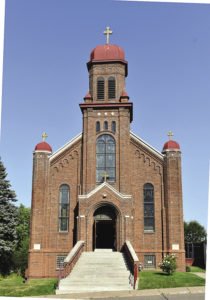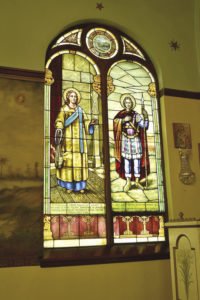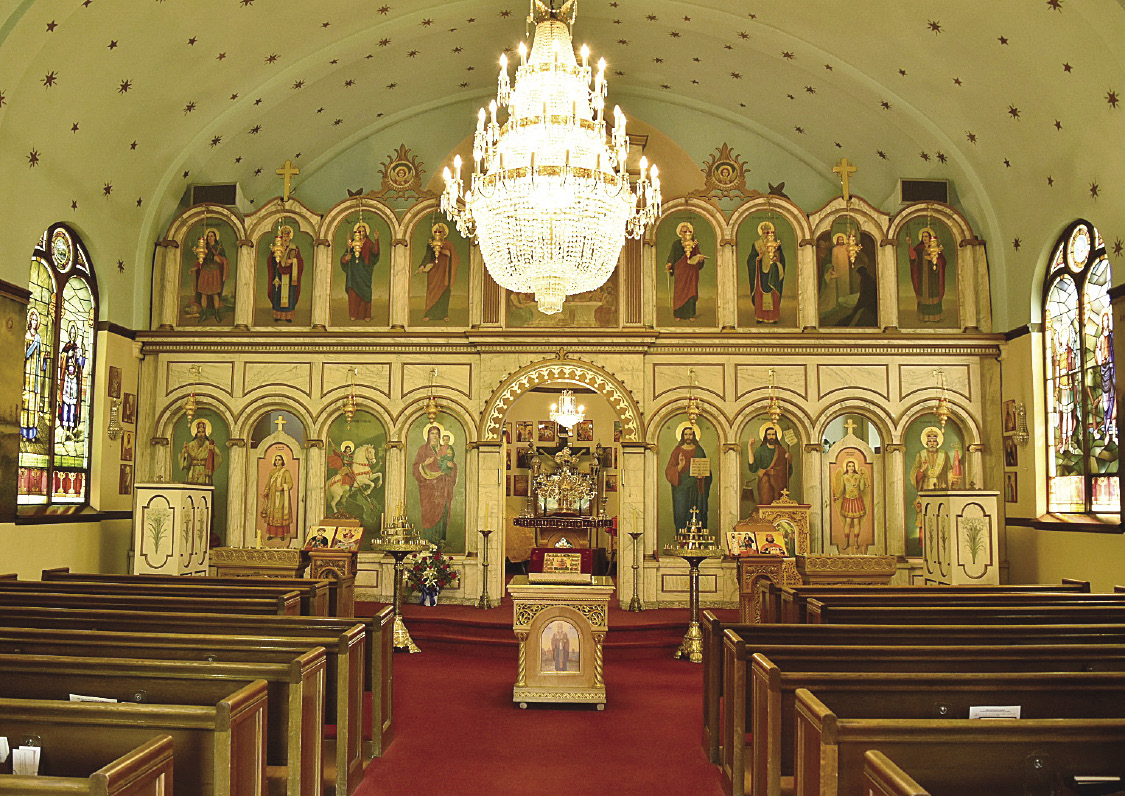Built nearly a century ago, St. George’s Serbian Orthodox Church carries on a vibrant part of local history. Tucked into Duluth’s Gary neighborhood, the solid brick church was built in 1923 after many Serbian immigrants came to the area for work in the steel industry. Between 1910 and 1920, the influx of Serbian immigrants created a strong social, cultural, and religious life in the area. The congregation began gathering prior to the church being built and missionary priests, along with neighboring priests from Chisholm, helped with occasional services, like baptisms, in people’s homes.
In 1923, Father Vladimir Porobich became the first full-time priest and then work began to build the church. It was decided by the congregation to build the church at 104th Ave. West and Gary Street and to dedicate it to St. George, a third century martyr. The church is small, only 44” by 70”, but has a vaulted ceiling and a massive belfry tower. And it sure is beautiful. The side walls are lined with elaborate stained glass windows, many that were donated by church members throughout generations. The church, as a whole, is a combination of Serbian, Roman, and Byzantine styles.
The Orthodox faith is sometimes referred to as the “Faith of the Saints”. There are 24 icons painted at the front of the church near the altar. It is called the “iconostasis”, or icon wall. The painter was none other than the famed Swedish-born artist with Duluth roots, David Ericson. He completed the series of paintings in 1944, in the Byzantine icon style. To this day, it is one of the largest collections of his work.

Father Kristijan Petrovich is currently the priest at St. George’s church and moved from Detroit, MI to Duluth seven years ago to serve here. He grew up in Detroit with parents who were from the “old country” and spoke only Serbian with him until he was five. Today, the church liturgy is partially in Church Slavonic and partially in English. Many members of the congregation still are of Serbian descent.
“It was an anchor for them, the Serbs, and it kept them here generation after generation,” Fr. Petrovich said.
This is where my own family history intertwines with the history of the church. Though not a member, I am of Serbian decent. My grandpa Don Kervina grew up in this church, as did his mother Helen, and her mother, Sarah Griak. My great-great grandma Sarah and her husband George donated one of the stained glass windows depicting St. George. Beneath, the dedication is written in Serbian with her name. My relatives are still active members of the church.
My grandpa’s cousin, Carol Griak, age 81, still resides in Gary and attends St. George’s Church. She was baptized there and remembers when all services were in Serbian or Church Slavonic. Griak says that the church is still rich with tradition.
“What it was many years ago, it still is today,” she said.
They still have a church school that was established in 1924, a sisterhood called the “Kolo” founded in 1928, a church choir founded in 1957, and a brotherhood called the “Men’s Club”. The Kolo or “the circle”, is a sisterhood of church women who do all the cooking and much more for holidays and feasts, raising money for the church as well. Father Petrovich described the Kolo as being instrumental in the life of the church.

“Without the Kolo, it would be like chopping off a wing, difficult for the church to function. They do a lot of work behind the scenes and are the backbone of the church,” he said.
St. George’s Church has adapted, though. In recent years, they’ve added a family night group and share some of their church happenings on Facebook. As an Orthodox priest, Father Petrovich is allowed to be married and have a family, as long as he is married before he enters priesthood. He has a wife and three kids and knew family night would be an important addition to church life.
“Be in this world, not of this world,” Fr. Petrovich said referring to scripture. “I have one foot in both worlds. I understand the secular world; I have a family and understand the family dynamic.”
And, with nearly 100 years of tradition underway, the hope is that the life and traditions of the church will carry them another 100 years.




